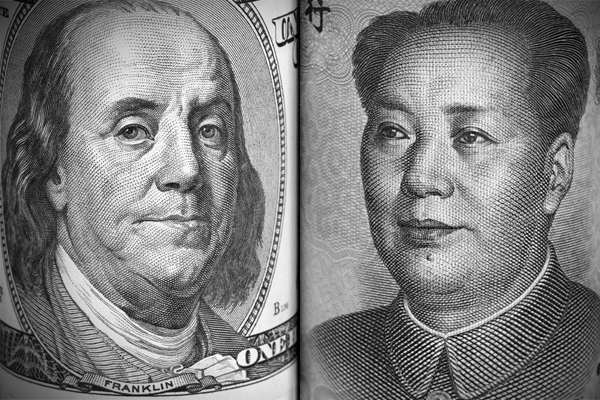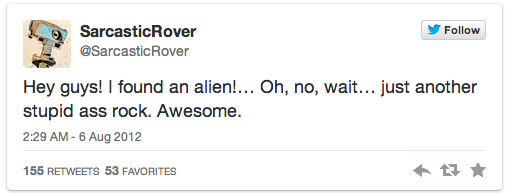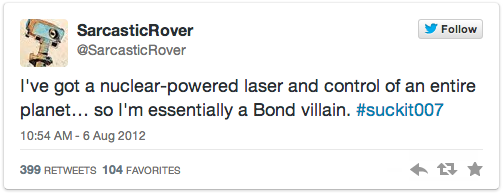The International Consumer Electronics Show is the world's largest stage for presenting the latest in consumer technology. It's an exciting time, and it's all happening this week.
The trade show, hosted every year in Las Vegas, is an important indication of what's coming up and what's going to be big in the near future.
This year, the Internet of Things (IoT) is taking center stage with more than 900 exhibitors sharing their products, services, and technologies that connect everyday devices to the network.
“The ‘Internet of Things’ is the hottest topic in tech right now,” said Karen Chupka, senior vice president, International CES and corporate business strategy, CEA.
She continues by saying, “It’s all about the opportunity to connect everyday items like cars, home security systems and kitchen appliances to networked devices like PCs and smartphones for greater control and management of our everyday lives. We’re excited that the 2015 CES will bring together all of the companies and products that are making this a reality.”
The IoT, while less flashy than a new TV model, is more important because it is all about creating an infrastructure. Building upon this nascent infrastructure will be many new startups and products from existing companies. Some will flop, while others will change the world in which we live.
The Sensors Marketplace will highlight one of the key technologies that is enabling the growth of the IoT movement. Some exhibitors participating in the marketplace include eyeSight Mobile Technologies, Logbar and QuickLogic Corp. In addition, the Smart Home Marketplace will showcase a smarter, more efficient home accelerated by smartphones and tablets interacting with a myriad of connected objects and devices, from basic security systems to connected lighting systems. Some of the 2015 CES exhibitors expected to showcase IoT technologies include Bosch, Lowe’s, Konnect Labs, iDevices, Muzzley and Blinksight among many others.
2015 CES keynoters Boo-Keun Yoon, president and CEO of Samsung Electronics Co. Ltd., and Brian Krzanich, CEO of Intel Corp., are expected to share their insights on IoT innovations.
Other CES conference programming will also explore the future of this trend with the following sessions:
Privacy and the IoT: Navigating Policy Issues
The Impact of the Internet of Things
The State of the Internet of Things
Another interesting highlight of the CES is the second year of Gary's Book Club, showcasing the works of prominent, thought-leading authors in the tech industry.
(Gary Shapiro is the president and CEO of the Consumer Electronics Association)
Books to be featured this year include:

 Shawn DuBravac, Ph.D
Shawn DuBravac, Ph.D
Digital Destiny: How the New Age of Data Will Transform the Way We Work, Live, and Communicate
What happens when everything is digital? In this provocative new book from the Consumer Electronics Association (CEA), host of the International CES, CEA’s chief economist and lead technologist, Dr. DuBravac, has a straightforward answer: Everything will change. Most people perceive the digital age as simply the accumulation of sleeker and more powerful gadgets. But our understanding of the digital age is narrow, because we are still in its infancy. This book explains that the world’s mass adoption of digital technologies portends the beginning of a new era for humanity, one that will rival the invention of the printing press for its transformational effects on every person, country and institution in the world. From driverless cars to automated homes to personalized healthcare, digital data will usher in a new phase of living for every person on the planet.

-Michael-Amsler.jpg) Andrew Keen
The Internet is Not the Answer
Andrew Keen
The Internet is Not the Answer
The Internet, created during the Cold War, has now ushered in one of the greatest shifts in society since the Industrial Revolution. There are many positive ways in which the Internet has contributed to the world, but as a society we are less aware of the Internet’s deeply negative effects on our psychology, economy, and culture. In The Internet Is Not the Answer, Andrew Keen, a twenty-year veteran of the tech industry, traces the technological and economic history of the Internet from its founding in the 1960s through the rise of the big data companies to the increasing attempts to monetize almost every human activity, and investigates how the Internet is reconfiguring our world—often at great cost. In this sharp, witty narrative, informed by the work of other writers, academics, and reporters, as well as his own wide-ranging research and interviews, Keen shows us the tech world, warts and all, and investigates what we can do to make sure the choices we make about the reconfiguring of our society do not lead to unpleasant unforeseen aftershocks.

 Peter Nowak
Humans 3.0 -The Upgrading of the Species
Peter Nowak
Humans 3.0 -The Upgrading of the Species
Our species is entering a new era. We’re now applying the latest technology to our own biology, and it is becoming part of our environment. But is that a good thing? Not if media scares about government spying, limitless automation, and electronic addictions are to be believed.
Veteran journalist Peter Nowak looks at what it means to be human—from the relationships we form to the jobs we do and the things we believe—and measures the impact of these innovations. Humans 3.0 shows not only how technology is propelling us into a new epoch, but also how it is improving us in the process.

 Frank Gruber
Startup Mixology
Frank Gruber
Startup Mixology
Entrepreneurship starts with an idea and a dream. Startup Mixology is first and foremost a book about turning your ideas into action. From the cofounder of Tech Cocktail, a veteran entrepreneur and investor who was named one of the most connected people in tech, this book covers the basic "ingredients" of winning entrepreneurship. Author Frank Gruber shows you how to tackle everything from idea generation to launch to marketing to funding and how to start getting things done. Inside, you'll find the stories of companies like MakerBot, WordPress, Zappos, Basecamp, Uber, and more.

 Patrick Stroh
Business Strategy; Plan, Execute, Win!
Patrick Stroh
Business Strategy; Plan, Execute, Win!
Embrace strategies for improving your business and reaching your organization's goals
"I wholeheartedly agree with Patrick Stroh: Good leaders understand strategy and good strategists need to be good leaders. Make this book a strategic tool for improving your business strategy." — Harvey Mackay, author of the #1 New York Times bestseller Swim With The Sharks Without Being Eaten Alive
In today's fast-moving and competitive business environment, strong leadership, insightful strategy, and effective innovation are critical links to staying ahead of your competition. Getting your business house in order can often be complicated, but does it really have to be? How do you take MBA 101 lessons, great models, and exceptional concepts and put them into play in the real world? Business Strategy: Plan, Execute, Win! strives to answers these questions in an educational and entertaining format. Working as a Fortune 20 practitioner with C-level executives, author Patrick Stroh has a keen understanding of the role played by current day strategists.

 Paul Paetz
Disruption by Design: How to Create Products That Disrupt and Then Dominate Markets
Paul Paetz
Disruption by Design: How to Create Products That Disrupt and Then Dominate Markets
No business buzzword is more frequently discussed or misused than "disruptive innovation". Yet despite widespread misunderstanding, the impact remains great. Disruptive innovators change the competitive playing field, often capturing 40 to 80% of total market revenue and half or more of total profits in categories they create. Unfortunately, only a small fraction of potential disruptors ever succeed, often by accident. It doesn't have to be that way.
For the first time, disruption theory is de-mystified into a practical step-by-step guidebook that walks you through creating a disruptive business strategy and putting it into practice. Written for entrepreneurs, CEOs, and product developers, Disruption by Design teaches invaluable how-to insights learned from successful disruptors, and from innovators who could have disrupted, but failed.

 Scott Steinberg
Make Change Work for You
Scott Steinberg
Make Change Work for You
Business, culture, and competitive landscapes have fundamentally changed, but basic principles and best practices for succeeding and future-proofing both yourself and your organization haven't. With a mix of compelling stories, research from the social sciences and psychology, and real-world insights, Make Change Work for You shows how to reignite your career, rekindle creativity, and fearlessly innovate your way to success by providing the tools needed to conquer every challenge in life or business. Readers will discover how to develop the vital skills required to triumph in the “new normal” by understanding and engaging in the 10 new habits that highly successful people share.

 Barry Wacksman
Chris Stutzman
Connected by Design
Barry Wacksman
Chris Stutzman
Connected by Design
The twin goals of growth and competitive advantage are proving difficult to attain in a world of fierce global competition and rapid technological change. Traditional strategies for gaining market share no longer yield the returns they once did. How can companies drive consumer preference and secure sustainable growth in this digital, social, and mobile age? The answer is through functional integration. Connected By Design is the first book to show business leaders and marketers exactly how to use functional integration to achieve transformative growth within any type of company. Based on R/GA’s pioneering work with firms like Nike, McCormick and L’Oreal, Barry Wacksman and Chris Stutzman identify seven principles companies must follow in order to create and deliver new value for customers and capture new revenues in the design and operation of functionally integrated ecosystems.

 Nicole Gallucci
Adversperience ~ The Convergence of Advertising & Experiential Marketing
Nicole Gallucci
Adversperience ~ The Convergence of Advertising & Experiential Marketing
Adversperience is a word and world of her own creation, speaking to the convergence of advertising and experiential marketing. Its Nicole’s take on how brands can relevantly touch consumer senses, engage target audiences, get noticed and win in this era of distraction, mass proliferation and global connection. The book focuses on the pre-event (AWARENESS), the event (ENGAGEMENT) and post event (SHARING). An Adversperience speaks to the physiological impact that occurs when consumers have a relevant personal experience in the context of a brand experience. The two become inextricably linked and part of the consumer’s very being. Once something is experienced it cannot be unexperienced.

 Alexis Ohanian
Without Their Permission: How the 21st Century Will Be Made, Not Managed
Alexis Ohanian
Without Their Permission: How the 21st Century Will Be Made, Not Managed
As Alexis Ohanian learned when he helped to co-found the immensely popular reddit.com, the internet is the most powerful and democratic tool for disseminating information in human history. And when that power is harnessed to create new communities, technologies, businesses or charities, the results can be absolutely stunning.
In this book, Alexis will share his ideas and tips about harnessing the power of the web for good, and along the way, he will share his philosophy with young entrepreneurs all over the globe.

 Aneesh Chopra
INNOVATIVE STATE: How New Technologies Can Transform Government
Aneesh Chopra
INNOVATIVE STATE: How New Technologies Can Transform Government
With INNOVATIVE STATE: How New Technologies Can Transform Government, Aneesh Chopra, the country’s first Chief Technology Officer, provides an essential guide for how we can create a government that is more transparent, participatory, and collaborative, one that harnesses the full potential of today’s technologies and is defined not by its size but by its smarts.

 Anna van Slee & Carolyn Chandler
Adventures in Experience Design
Anna van Slee & Carolyn Chandler
Adventures in Experience Design
In today’s mobile, global, 24/7 content world, consumers expect products, services and experiences that are personalized and intuitive. They expect good design. You don’t need to be a whiz with code or a Photoshop ace, but design thinking has become an essential skill set for everyone. Adventures in Experience Design is an activity book that interactively teaches experience design through games, pithy lessons and other delightful exercises. With Adventures, you will create a product from scratch (or innovate on your existing one!) and get an introduction to design methodology in the process.







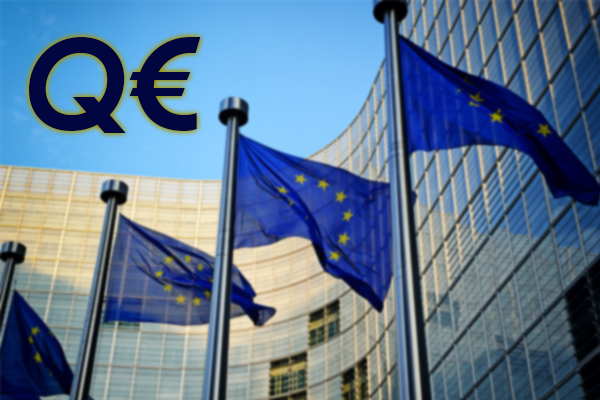
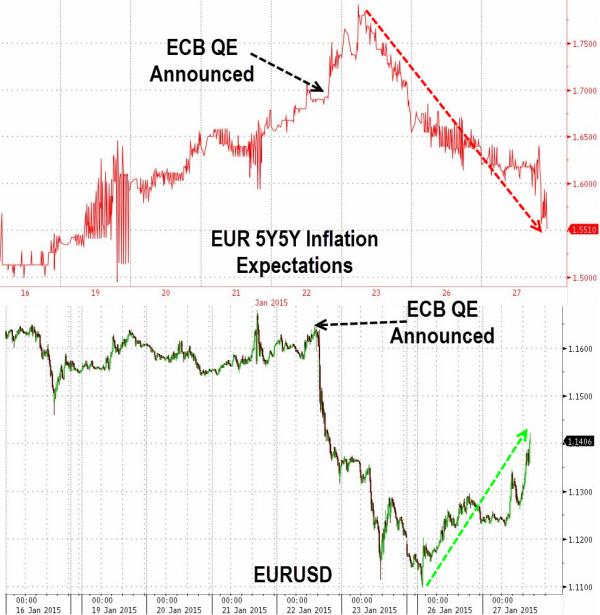

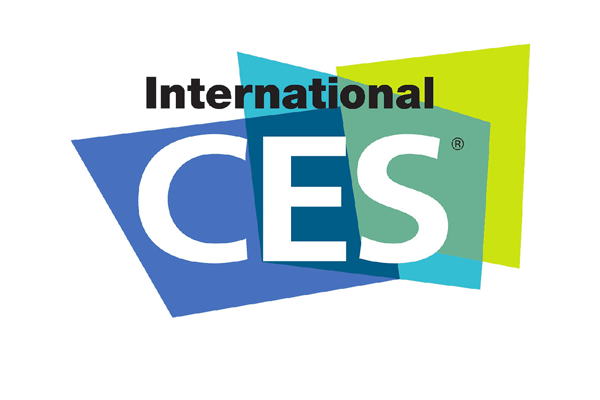



-Michael-Amsler.jpg)




















